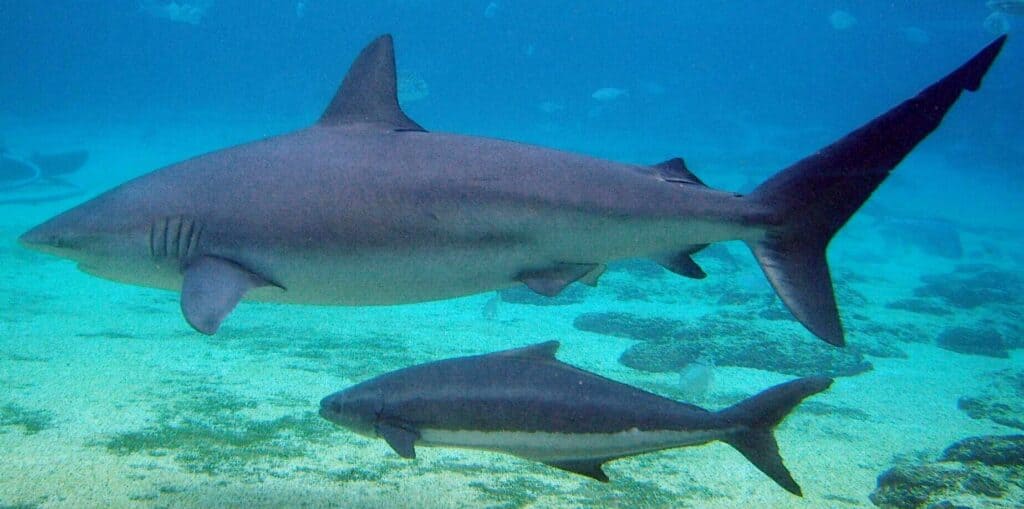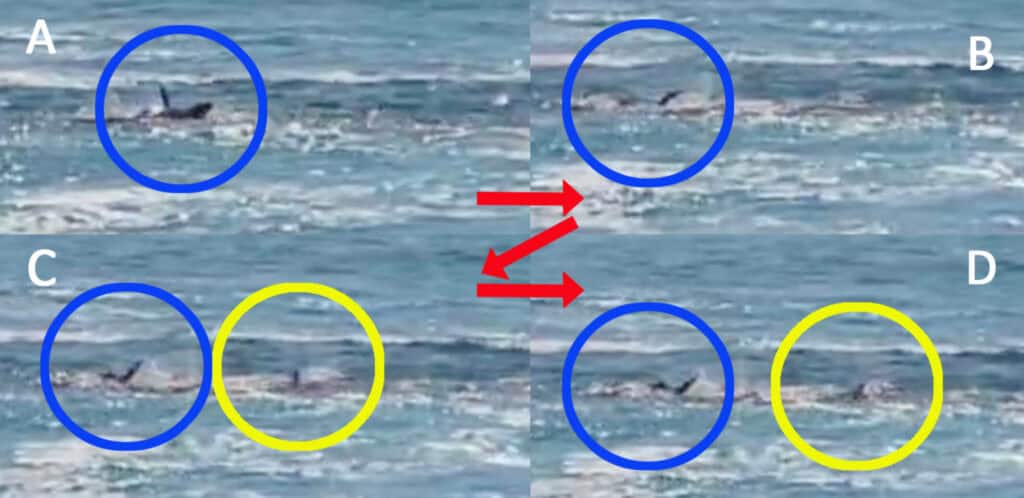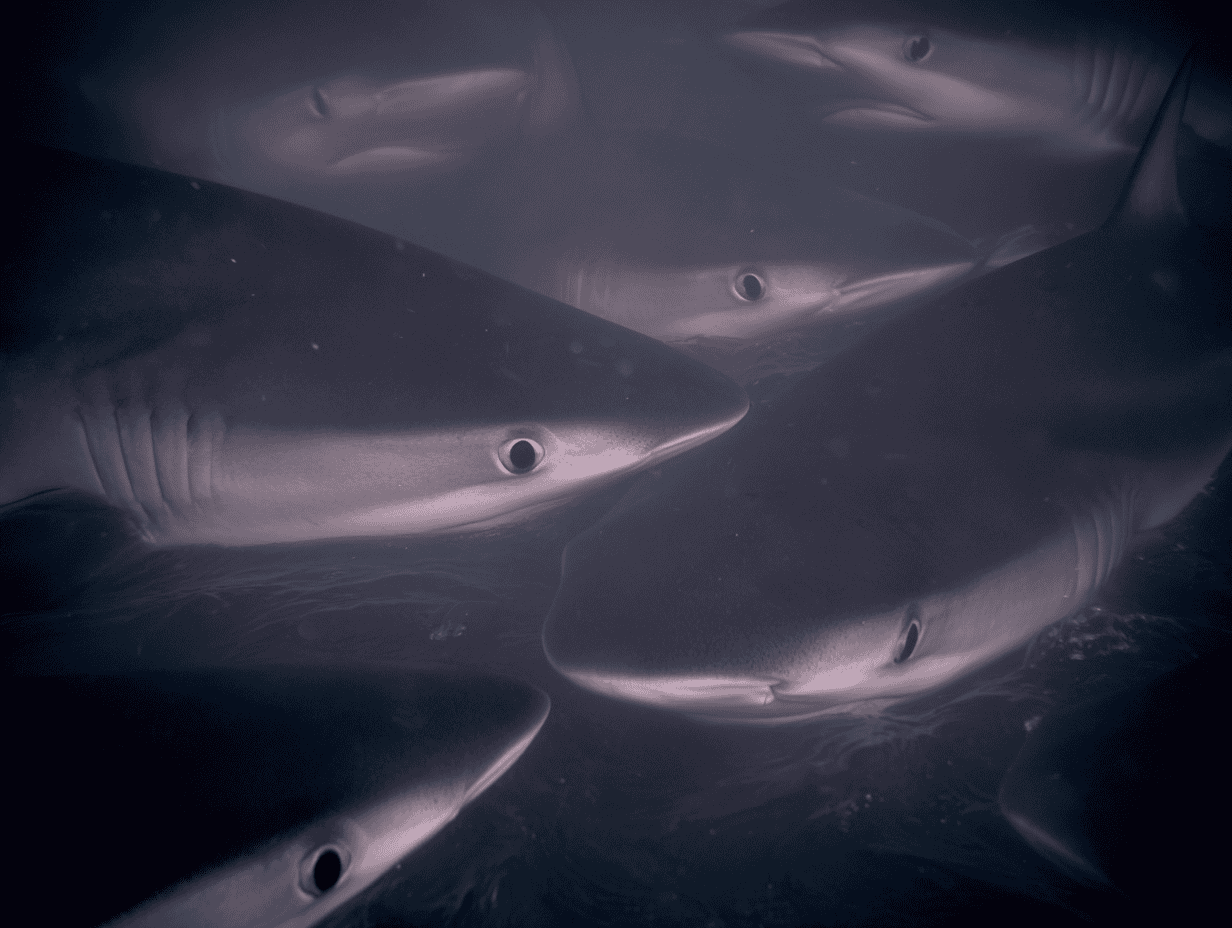 Until recently, dusky sharks had no known record of killing humans. Credit: WikiMedia Commons.
Until recently, dusky sharks had no known record of killing humans. Credit: WikiMedia Commons.
On a calm April morning just off of Israel’s Hadera coast, a snorkeler drifted among dusky sharks (Carcharhinus obscurus) — a species long considered harmless to humans. Within minutes, the water ran red. By the time rescue boats arrived, the man was gone. What followed stunned marine biologists: A fatal attack carried out by sharks with no known record of killing humans.
In a recent study published in Ethology, marine scientists Eric Clua and Kristian Parton reconstruct a perfect storm of human error, ecological distortion, and animal instinct. Their analysis suggests the victim wasn’t hunted — he was caught in a feeding frenzy triggered by a chain of artificial cues.
Dusky sharks might seem like large, imposing predators, but they’re typically wary of people. Unlike white, tiger, or bull sharks — the species responsible for almost all fatal encounters — duskies have spent over a century in the “non-traumatogenic” column: powerful but not predatory toward humans. Until now.
How tourism rewired the sharks
Hadera’s coast has become a magnet for these sharks, not because of pristine ecosystems, but because of warm-water outflows from power and desalination plants. These discharges, combined with abundant food waste and human feeding, created an unnatural gathering spot — a place where up to 80 adult sharks linger each winter.
Over time, local tourism filled the gap left by declining fisheries. Shark-watching boats began selling close-encounter experiences. Unregulated operators, eager to keep sharks nearby, started throwing fish scraps into the water. Coined “artificial provisioning,” it’s a practice that conditions wild animals to associate humans with food.
The result, say Clua and Parton, is a new behavioral pattern: begging. Some sharks learned to swim directly toward divers, often brushing against them, waiting for handouts. The sharks’ natural caution eroded.
A camera mistaken for prey
 Visual proof of the involvement of several sharks in the predation. Photo-sequences (extracted from video) showing dorsal fin and tail, revealing the involvement of a shark predating the victim (blue/dark circles in A and B) followed by the implication of a second one (yellow/clear circles in C and D). Credit: Ethology.
Visual proof of the involvement of several sharks in the predation. Photo-sequences (extracted from video) showing dorsal fin and tail, revealing the involvement of a shark predating the victim (blue/dark circles in A and B) followed by the implication of a second one (yellow/clear circles in C and D). Credit: Ethology.
According to witness interviews and recovered video frames, the snorkeler was filming the sharks as he swam more than 100 meters from shore when they surrounded him. One shark lunged, apparently at his GoPro camera.
Electronic devices emit faint electromagnetic fields similar to those of struggling fish. For sharks, whose snouts are lined with sensitive ampullae of Lorenzini, such cues can trigger reflexive bites.
But that one bite changed everything. Blood clouded the water. The thrashing sound and scent instantly transformed nearby sharks from indifferent spectators into competitors. Within seconds, a feeding frenzy erupted.
A “feeding frenzy,” Clua and Parton explain, is less about hunger than about chaos. Once one shark attacks, the rest join in, driven not by appetite but by competition. The frenzied rush blurs distinctions between prey, conspecifics, and foreign objects.
In the Hadera case, at least two dusky sharks were identified in the attack sequence, though the authors suspect others joined in. Each bite fed the frenzy, lowering inhibitions across the group.
By the time witnesses saw the fins disappear, the incident had become what the authors call “collective predation.” The man, though not seen as prey at first, became one in the confusion — a rare moment when human-made conditioning collided with primal reflex.
Unfortunately, this was not an isolated incident. Local scientists had reported hypoxic conditions in nearby river mouths earlier that month — low-oxygen water that can kill fish and force sharks closer to shore in search of food. Visibility was poor, and warm effluent concentrated marine life near the power plant’s outflow.
Each of these stressors amplified the odds of a misfire. In a normal ecosystem, dusky sharks scatter across miles of coastline. In Hadera, dozens were packed into a few hundred meters of murky, bait-scented water — the ideal ingredients for a behavioral breakdown.
Lessons for a changing sea
The researchers urge local authorities to impose an immediate ban on all shark feeding and spearfishing near aggregation sites. Such measures, they argue, would restore natural distance between sharks and swimmers without harming the tourism economy. Sharks would likely remain in the area for its warmth, but without the lure of food, they’d stay farther from humans.
The alternative, they warn, could be far worse. Public outrage after fatal encounters often leads to shark culls, which decimate populations already struggling worldwide.
The Mediterranean, long considered too depleted and cool for major shark populations, is now warming, drawing species once foreign to its waters. As ecotourism grows, so will close encounters.

